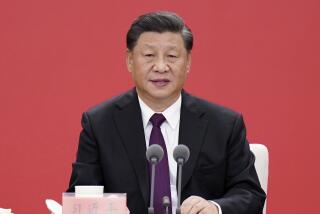Intra-Regional Trade Grows in Asia
The U.S. share of Pacific Basin trade will decline over the next several years as the Asian nations of the region increasingly turn to each other as economic partners. The trend may mean lower U.S. trade deficits and new opportunities for American banks to fashion creative financing schemes for intra-regional trade.
These are among the conclusions of a report issued last week by Crocker Bank on changing patterns in Pacific Rim trade in the 1980s. The studyâs author, Crocker international economist Thomas A. Layman, said that the United States and Japan will remain the major external trading partners for the majority of East Asian nations but that slower worldwide economic growth and protectionist pressures could lead them to rely more on each other for export income.
âTrade between those nations and the rest of the industrial world, including Japan and the United States, will decline relative to intra-regional trade. The United States will have a smaller overall share,â Layman said in an interview. âIn the long run, trade within Asia will increase in importance for each country.â
Despite a major worldwide recession, export volume from developing East Asian nations overall grew an average of more than 13% a year between 1978 and 1983. (This group includes all the countries of Asia and the Pacific except Japan, Australia and New Zealand.) Layman argued that this pace cannot be sustained and that the pattern and direction of regional trade will change markedly by the end of the decade.
âGiven the outlook for slower world growth over the next few years, especially in the U.S., and the consequent rise in protectionist sentiments in those markets, export growth will surely slow,â he said.
Lower U.S. Trade Deficit
Less two-way trade between the United States and its Pacific Basin partners will mean a lower U.S. trade deficit, which totaled $64 billion last year for the Pacific Rim alone. The total U.S. trade imbalance in 1984 was $123 billion.
The implications for developing nations in East Asia include greater borrowing from abroad; reduced import demand, especially for manufactured goods; currency adjustments to reduce current links to the U.S. dollar, and an increase in local trade, much of it financed by non-traditional means.
Intra-regional trade already is growing faster than trade between the developing nations of Asia and the industrial world. The growth comes despite a massive pullback on the part of multinational banks from lending to foreign governments and businesses. Having been burned in Latin America, the big banks are extremely shy about committing funds to lesser developed countries.
The result, Layman said, will be greater dependence on new--and sometimes old--forms of trade finance. Major banks and finance companies have created a $125-billion market in interest rate âswaps,â complicated multi-party transactions in several currencies that take advantage of fluctuations in exchange rates. Banks also are moving toward financing specific projects that they deem credit-worthy rather than lending to companies or governments for general purposes.
But, more intriguingly, there appears to be a resurgence of interest in so-called counter-trade arrangements, non-cash trade deals including barter, partial payment for raw materials in finished goods and investment in exchange for exports.
âThe rise in external indebtedness and the fall in export earnings associated with declines in world commodity prices for many developing countries have led to an inevitable interest in counter-trade as an important international commercial instrument,â Layman wrote in his report.
Barter Deals Increase
Much of the current trade with China, which lacks hard currency to pay for imports, is financed in this way. Between 1982 and 1984, Indonesia traded rubber, coffee, cocoa, tea, plywood, cement and clothing worth $1 billion for fertilizer, factory equipment, drilling gear, telecommunications equipment, locomotives and rail cars from a number of foreign partners. Malaysia last year reported $33 million in such transactions with Korea, Yugoslavia and Brazil, trading oil, timber and rubber for iron, electrical equipment and patrol boats. India and the Soviet Union do an estimated $2.5 billion in barter each year.
For the most part, banks havenât yet figured out how to profit on these deals. But they will, Layman predicted.
âAs this form of trade becomes more widely utilized and the lines which distinguish bank and non-bank financial institutions become less pronounced, âcreative financingâ will attract increased interest,â he wrote. âThe Pacific Rim will be a logical host for the further development of this form of international commerce.â
More to Read
Sign up for Essential California
The most important California stories and recommendations in your inbox every morning.
You may occasionally receive promotional content from the Los Angeles Times.










